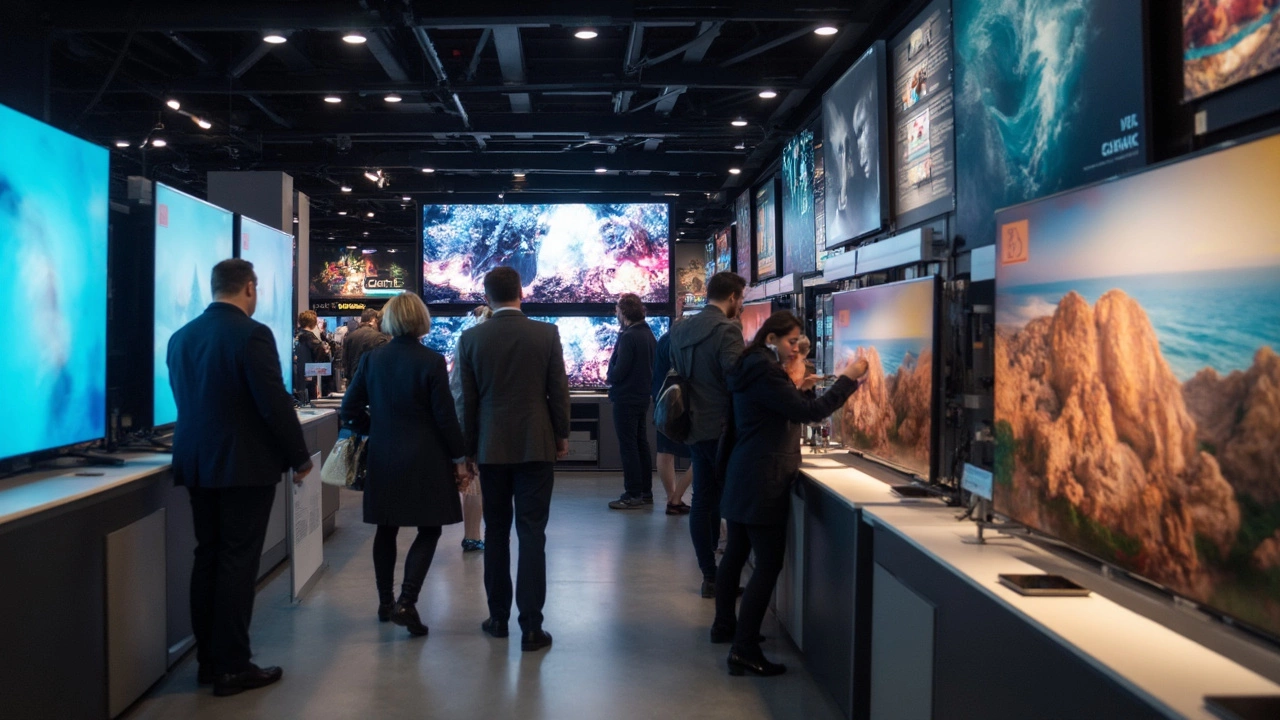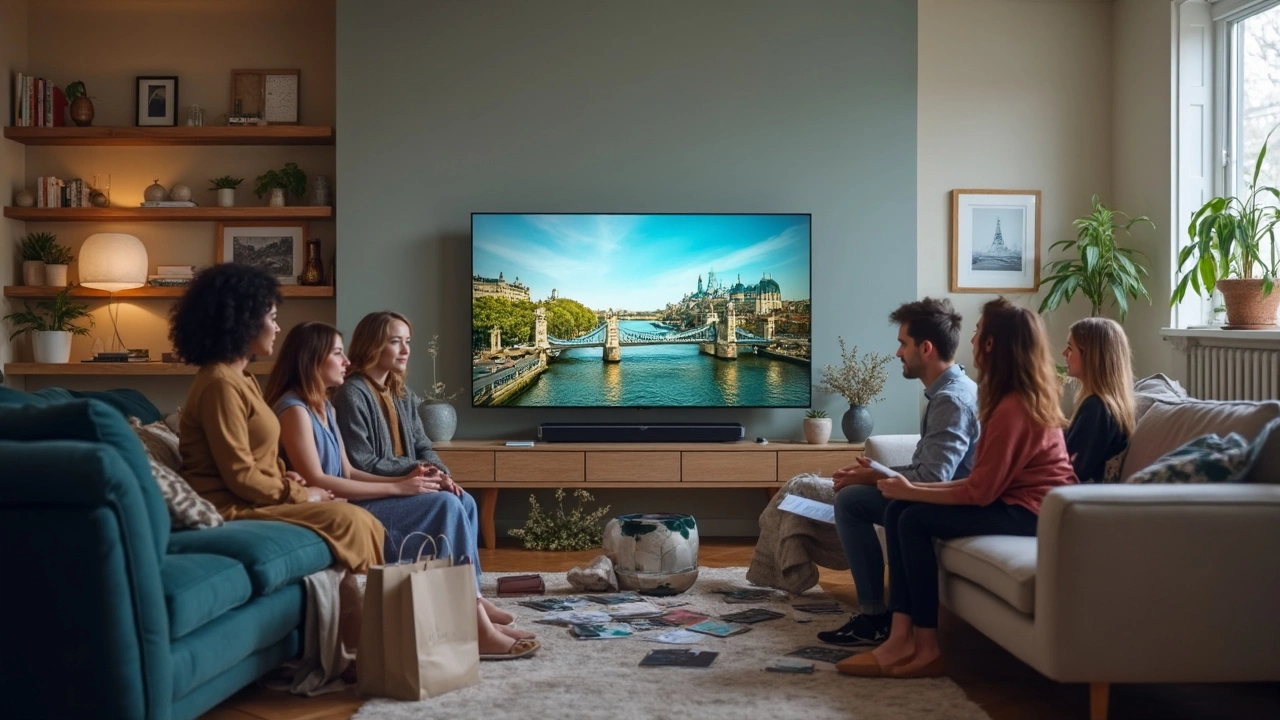Think getting a new TV is simple? It feels like the options multiply every year. Walk into a big electronics store, and you’ll see price tags on OLED, QLED, Mini LED, and wild “8K” displays that sound like they’re planning to beam 3D holograms into your living room. But here’s the truth: not all TVs live up to the buzz, and those brand commercials always leave out the nagging details—like why one picture looks “whiter” than another, or why your neighbor has to restart his $3000 TV just to launch Netflix. It’s no secret that TVs aren’t really about the biggest numbers or the priciest labels. In 2025, it’s about who nails the basics: picture quality, longevity, and the stuff regular humans actually use.
What Sets the Top TV Brands Apart?
Let’s start by blasting away some myths. Price alone doesn’t spell “the best,” and those wild specs plastered across boxes can be full of tricky marketing. Take “8K UHD” claims—yeah, it’s cool in theory, but do you even have enough 8K content to play outside of demo clips? Not really. If you look at the TV world right now, just a handful of brands shape what lands in living rooms: Samsung, LG, Sony, TCL, and Hisense. Sure, Panasonic or Vizio pop up here and there with strong models, but those five run the scene, period.
What makes them so different? Samsung’s always shouting about QLED—those quantum dots light up a room like Times Square, and Colors that pop so hard they almost hurt your eyes. LG made OLED its calling card, and let me tell you, those true blacks and smooth colors make movies feel like high art. Sony, the quiet master, seems to fine-tune image quality until it looks so real you forget you’re staring at a screen. TCL and Hisense play the value game: solid panels, growing smarts, way less wallet-pain—yet sometimes they punch way above their weight for basics like HDR brightness.
Behind all this talk is the battle between OLED and QLED. LG and Sony’s OLEDs have real black levels that look endless because each pixel can turn off completely. QLED, Samsung’s baby, uses quantum dot layers over LED for amplified brightness and color, which works great in bright rooms (like those blinding south-facing living rooms, you know the ones?). Pick OLED if your room is shadowy and you love cinema nights. Go QLED or big Mini LED if sunlight pours in by the gallon.
Here’s a quick breakdown of the flagship 2025 models:
| Brand | Top 2025 Model | Panel Tech | Main Perks |
|---|---|---|---|
| Samsung | S95D OLED / QN90D QLED | QD-OLED / Mini LED QLED | Insane brightness, smart Tizen OS, gaming features |
| LG | G4 OLED / C4 OLED | OLED | Perfect blacks, Dolby Vision, webOS, great for movies |
| Sony | A95L OLED / X95L Mini LED | QD-OLED / Mini LED | Accurate color, motion clarity, Google TV |
| TCL | QM8 | Mini LED QLED | Value, local dimming, bright HDR, Google TV |
| Hisense | U8N | Mini LED QLED | Budget-friendly, fast apps, Dolby Vision |
So how do you really choose? Check your priorities. If you game a ton, Samsung and LG are stacking up HDMI 2.1 ports and ultra-low input lag. Wish your screen could double as home art? Samsung’s The Frame hides in plain sight. Want true-to-life color and skin tones? Sony’s upscaling and picture processing is best in class, no contest.

Picture Quality, Features, and Real-Life Use
This is where truth meets hype. Everyone dreams of that retina-melting color and sharpness you see on store models, but most of those are running fake demo loops with brightness dialed up so high you’d never use it at home. Out in the wild—your couch, your living room—what matters most?
- Panel Type: OLED brings inky blacks, true contrast, and is unbeatable for dark, movie cave setups. QLED and Mini LED shine when things get bright; they’re more at home in sunbeams and reflect less.
- HDR: Every big name now supports decent HDR (High Dynamic Range). Sony and LG usually deliver purer Dolby Vision, Samsung leans hard into HDR10+ (because of their licensing feud with Dolby). More HDR = punchier images if the source content is right.
- Refresh Rate: Look for at least 120Hz if you’re a gamer or sports junkie. That means smoother action. All major 2025 models from the big brands have it in the mid to top tier.
- Smart TV Software: Samsung uses Tizen, LG uses webOS, Sony is all-in on Google TV, TCL and Hisense play the Google-TV or Roku game, depending on the model and region. Google TV tends to be faster with app support, but all of them are zippy in 2025; the real difference is which remote and layout you like best.
- Upscaling: Sony’s cognitive processor XR is the new gold standard for turning regular 1080p or 4K content into jaw-dropping clarity. LG and Samsung are close behind, but you’ll notice Sony keeps faces and backgrounds natural, avoiding that waxy look cheap TVs get.
- Sound: Modern TVs are basically skinny poster boards. Some (like LG G4 and Sony A95L) have hidden actuators and better built-in audio, but let’s not kid ourselves—nobody buys a TV for sound unless they add a decent soundbar.
- Inputs: If you’ve got a next-gen game system or plan to buy a PS6, look for at least two full HDMI 2.1 ports. Samsung, LG, and Sony have them on 2025 models; TCL and Hisense put them on their higher-end lines like QM8 and U8N.
- Smart Home Stuff: Samsung and LG integrate with Alexa, Google, and their own voice assistants. You can turn on the TV, change settings, or launch a show with your voice if you’re into that vibe.
When reviewers went hands-on at CES 2025, side-by-side shootouts showed some wild surprises. Even $800 TCL and Hisense screens held their own beside $2500 Sony and LG OLED monsters—at least when it came to raw brightness for daytime viewing. But when things got dark? OLED still ruled. Burn-in risk used to be the OLED elephant in the room, but the new 2025 panels from LG, Sony, and Samsung come with smart pixel shifting that erases almost all threat outside of running CNN 24/7 for years on loop.
Let’s talk longevity. You want a TV that lasts, with reliable firmware updates and strong customer support. According to the 2025 J.D. Power survey, LG and Sony score the highest for post-purchase support, closely followed by Samsung. TCL and Hisense are catching up, especially in North America, but still trail for warranty smoothness.
Here are some of the most praised features by users in real reviews this year:
- LG’s Magic Remote—point it like a wand, and menus fly. It sounds like a gimmick until you’ve scrolled through YouTube with your thumb sore.
- Sony’s Auto HDR Tone Mapping—plugs straight into your PS5 and dials everything for killer game visuals, no tweaking called for.
- Samsung’s game menu—lets you toggle VRR, check FPS in real time, and even shrink the game to a window if you want to multitask.
- TCL and Hisense’s fast-start-up—no more waiting ages for a budget TV to wake up.
What about energy and design? Most 2025 big screens now use smarter energy-saving modes—Samsung’s Eco Sensor, LG’s AI Picture Pro, and Sony’s Light Sensor tech—all slash electricity bills by dimming unnecessary brightness. Bezels are nearly invisible. Wall-mounting has gotten so easy you barely need more than a screwdriver and a bit of patience. The biggest shift, though, is in repairability: LG and Sony are following new EU laws that make it easier to replace parts, so these TVs might actually stick around longer than your fridge.

Hidden Costs, Hype Traps, and the Right TV for You
It’s easy to get dazzled, but let’s pump the brakes just a second—there’s a bunch of stuff companies aren’t pushing in those sparkling ads. Extended warranties can be a raw deal, since most panels that fail do so in the first year (which is always covered free). Those “Next-Gen HDMI” buzzwords? Every TV says it has HDMI 2.1, but only top-line models actually unlock all the features—like 4K/120Hz, VRR, or ALLM (Auto Low Latency Mode). Don’t get scammed by ports that aren’t as fast as promised.
And pay attention to software updates. LG and Sony have great track records for updating smart TV apps and fixing bugs. Samsung is good, but cheaper TCL and Hisense TVs might see updates slow down after a year or two. That means apps might lag or stop working as quickly. Before you dive in, search for reviews about "long term support" for the model you want, not just launch day tests.
Here’s where budget meets happiness. If you want the *strongest* TV experience without future regret, pick a model one step before the absolute flagship. For example, LG’s C4 gives 95% of the jaw-dropping visuals of the G4, for hundreds less. Samsung’s QN90D Mini LED rocks daylight visibility just like their huge QN95 (only nerds notice the difference). Sony’s X95L Mini LED is obscenely good without that OLED price. TCL QM8 and Hisense U8N bring the fight for folks who want to watch action flicks, binge sports, and play games but don’t obsess about movie-grade blacks.
Let’s do a side-by-side comparison of what each brand brings to the table for everyday buyers in 2025:
| Brand | Strength | Weakness |
|---|---|---|
| LG | Best OLED, picture processing, support | Prices can jump fast above entry models |
| Samsung | Brightest QLED, gaming features, reliable Tizen OS | No Dolby Vision, some menu complexity |
| Sony | Most accurate color, upscaling, best for realism | Expensive, fewer sales/promos |
| TCL | High value, Mini LED cheaper than rivals, Google TV option | Panel lottery, less consistent support |
| Hisense | Budget pricing, solid HDR, big features for dollars | Build quality can vary by model and region |
There’s no “one size fits all” answer, but here’s the bottom line in plain speak: movie buffs who crave true black, gorgeous color, and don’t mind dimmer screens should run with LG or Sony OLEDs. If your TV room is filled with windows and sunlight, Samsung’s QLEDs or a Mini LED from TCL/Hisense crushes it for brightness. Gamers will find happiness with Samsung for the extras, LG for the fastest picture, and Sony for plug-and-play PlayStation magic. Bargain hunters should check out TCL or Hisense—just do it in person or with good return policies, since their build consistency varies by model and region.
Chase the specs if you want. But the best TV—you know, the one you’ll love for years—focuses on what you see *right now* and how it fits your space and habits. And remember, you don’t need to spend $3k to get a gorgeous screen in 2025. If you skip the marketing noise, check the panel tech, and get hands-on when you can, you’ll spot the gem that makes Netflix, games, and YouTube all look fresh. Happy watching.

